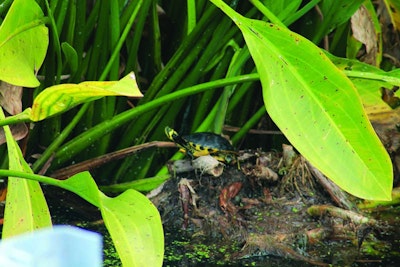
Interested in Treatment?
Get Treatment articles, news and videos right in your inbox! Sign up now.
Treatment + Get AlertsWhen a 200-acre wetland was constructed in 1996 as part of a 1.5 mgd aerated lagoon system in Richmond Hill, Georgia, it served as the final treatment phase before discharge from the Sterling Creek Water Reclamation Facility to the Ogeechee River.
It created a habitat for birds and wildlife and attracted visitors who wanted to watch the birds and view the wildlife. It also created educational opportunities for schools, was the object of research projects for universities and served as an example to other municipalities interested in creating a constructed wetland. It was so popular that the city designated the entire 500-acre treatment site as a wildlife sanctuary.
Sustaining a resource
Since then, population growth and seasonal rainfall variations have led the city to increase the plant’s capacity and improve its effluent quality. Today, an Ovivo membrane bioreactor (MBR) is being installed; design capacity will increase to 4.0 mgd. But the Georgia Environmental Protection Division is requiring the new facility to discharge at the outlet of the constructed wetlands.
“With our expansion into MBR treatment, our current overland spray process and aeration pond will cease operation,” says Charlie Heino, director of Public Works. “But as a testament to the original vision of a more harmonious and natural process, our wetlands will stay.”
Heino, who works for Enviroworx Operations Management, the city’s contract operations firm, says the constructed wetlands are an environmental asset to the Richmond Hill community, and the city doesn’t want to lose that resource.
Big for birders
To protect it — even though the normal water source for the wetlands will be eliminated — the wetlands will become the city’s first reuse customer. Effluent will be diverted to the wetland system to maintain a water level without the overflow to the outfall. “This will keep the wetlands wet and preserve the natural habitat for the Richmond Hill community,” says Heino.
The wetlands had been constructed in an environmentally sensitive area close to tidal marsh estuaries, natural wetlands and the Ogeechee River. Complementary native plant species were added, such as sweetwood reed, eastern gamagrass and a variety of sedges. Marsh grasses like goldenrod, ironwood and bladderwort were added, as were trees such as red maple, river birch, sugar berry and white ash.
Wildlife such as slider turtles, deer, cougars, bobcats, cottonmouth snakes and alligators have moved in and call the wetlands home.
On tour
Plant operators conduct regular tours of the facility. Attracted by a large population of egrets and ducks and migratory birds such as geese and loons, bird-watchers make up the largest share of visitors, and their numbers increase each year. “The most noted bird-watcher to visit so far has been noted ornithologist and author David Allen Sibley,” says Heino. “His book, The Sibley Guide to Birds, is widely regarded as perhaps the most comprehensive guide and field identification manual to North American birds.”
Heino says the promotion of reuse water for applications such as golf courses, parks and industrial applications is the No. 1 priority of the Richmond Hill alternative water resource plan, but preservation of the wetland habitat will continue: “The wetlands will be kept alive with reuse water from the new plant that has been UV treated for pathogens.”





